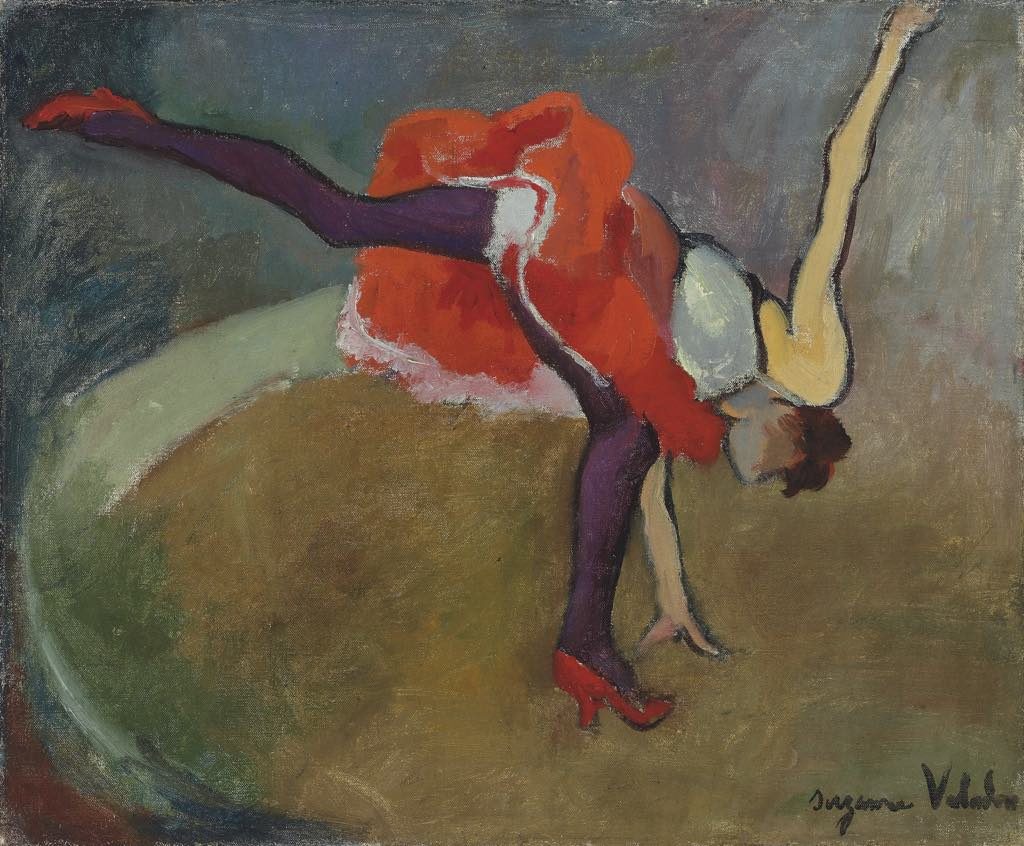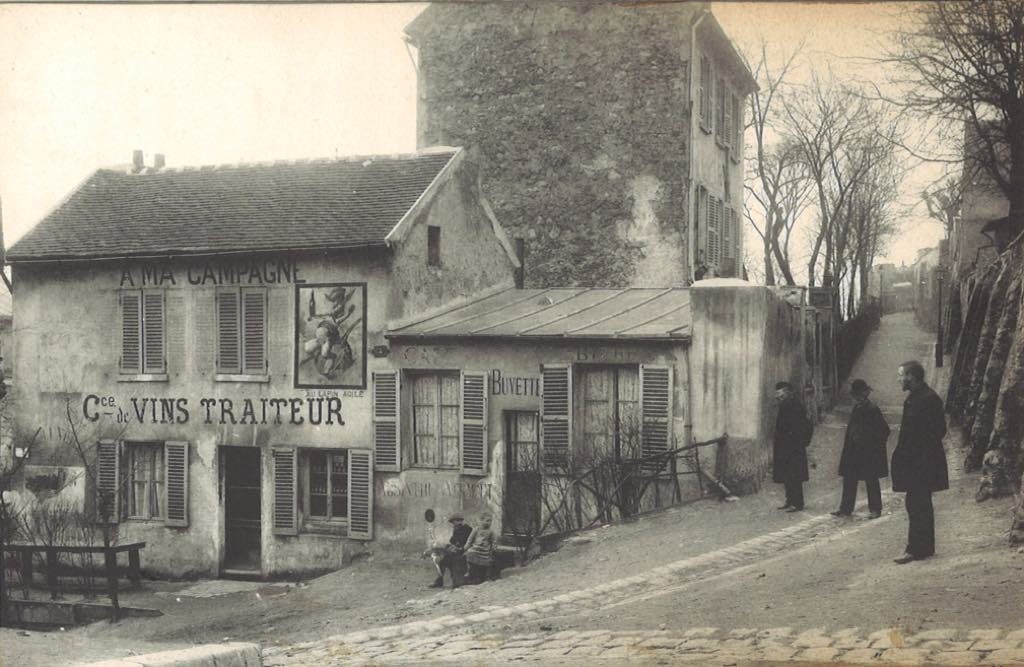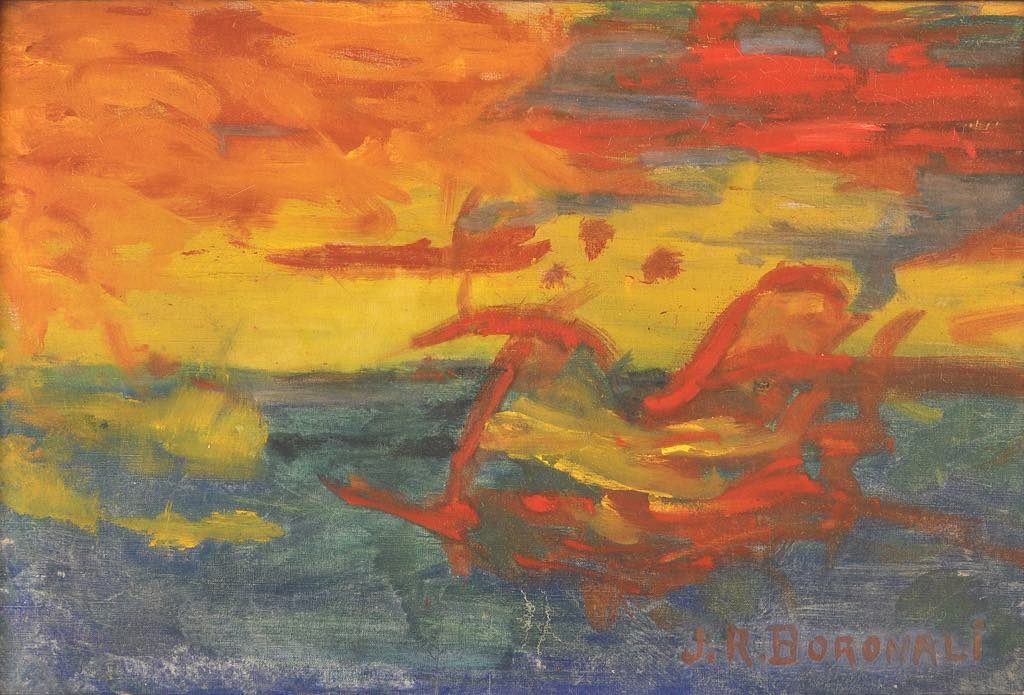
The Musée de Montmartre bills itself as “the most charming museum in Paris,” and that may well be true. The word “charming” kept popping into my mind as I perused its current exhibition, “Artists in Montmartre: Legendary Places and Studios,” and wandered the streets of Montmartre before and after seeing the show.
The museum itself is housed in two of those picturesque houses on a picturesque street and has what must be one of the most peaceful (and most beautiful) gardens in Paris. In the past, it housed many of the artists who moved to the area around 1870 to take advantage of the low housing prices, cheap cafés and bars, and bohemian lifestyle, although they often had to move on once the inexorable wheels of gentrification began to turn. The miracle is that this hilltop village hasn’t changed much since that time, hence its great charm.
The exhibition tells the story of some of those artists, spotlighting the hotbeds of artistic activity, including the famed Bateau Lavoir, of course, where Picasso, Modigliani, Max Jacob and many others (33 names are listed in the show) lived and worked and whose story has been told many times, but also lesser-known oases of Montmartre charm like the La Cité des Fusains at 22, rue Tourlaque, where Auguste Renoir, Pierre Bonnard and Joan Miró, among others, had studios on land that had once been part of the Montmartre Cemetery.

The paintings on display are mostly minor works by the artists shown – the exhibition is most enjoyable as an immersion in the artistic life of Montmartre – but a few stand out for their, uh, charm. One is a landscape by Charles Camoin showing an artist’s house in the shantytown known as Le Maquis, which was soon to fall victim to developers’ wrecking balls.
Next to it is an accomplished, highly detailed 1897 drawing by František Kupka of the entire hillside, with the shantytown in the foreground and a windmill and the dome of the Sacré Cœur above it on the hilltop.

A very weird painting by Adolphe-Léon Willette, “Zut! V’la l’Printemps” (1882), shows three strange characters, including a robot-like knight in shining armor, standing in a landscape and staring at what looks like the body of a dead boy with a woman’s straw hat on the ground next to him. Willette belonged to a group called Zut, which also included Arthur Rimbaud and sounds like a predecessor to Dada with its advocacy of “a bohemian lifestyle, rebellion and an absurdist aesthetic.” Could the figure lying on the ground be the young soldier sleeping in the grass in Rimbaud’s poem “Le Dormeur du Val”?
There are a few attractive works here by the odd threesome Maurice Utrillo, his mother Suzanne Valadon and her husband André Utter, all of whom lived together in the museum’s current home at 12, rue Cortot (the subject of an exhibition held here in 2015-16), including Valadon’s “La Roue” (1916; shown at the top of this page), Utter’s portrait of Utrillo and Utrillo’s “Place Pigalle” (1910).
One painting you are unlikely to see elsewhere is “Sunset over the Adriatic” (1910), by Lolo, aka Joachim Raphaël Boronali, the result of a famous hoax perpetrated by habitués of the Lapin Agile, who tied a paintbrush to the tail of a donkey belonging to the café’s owner, dipped it in paint and allowed the animal to swish it over a canvas. The resulting work was accepted by the Salon des Indépendants and was even sold. Just goes to show that it’s easy to make an ass out of art buyers.
Favorite



My favourite museum in Paris (apart from d’Orsay). I regret you do not mention that Vincent van Gogh, the world’s most expensive painter, lived at 54 rue Lepic near the bottom of the Butte, with his art dealer brother Theo before his famous move to the Yellow House in Arles.